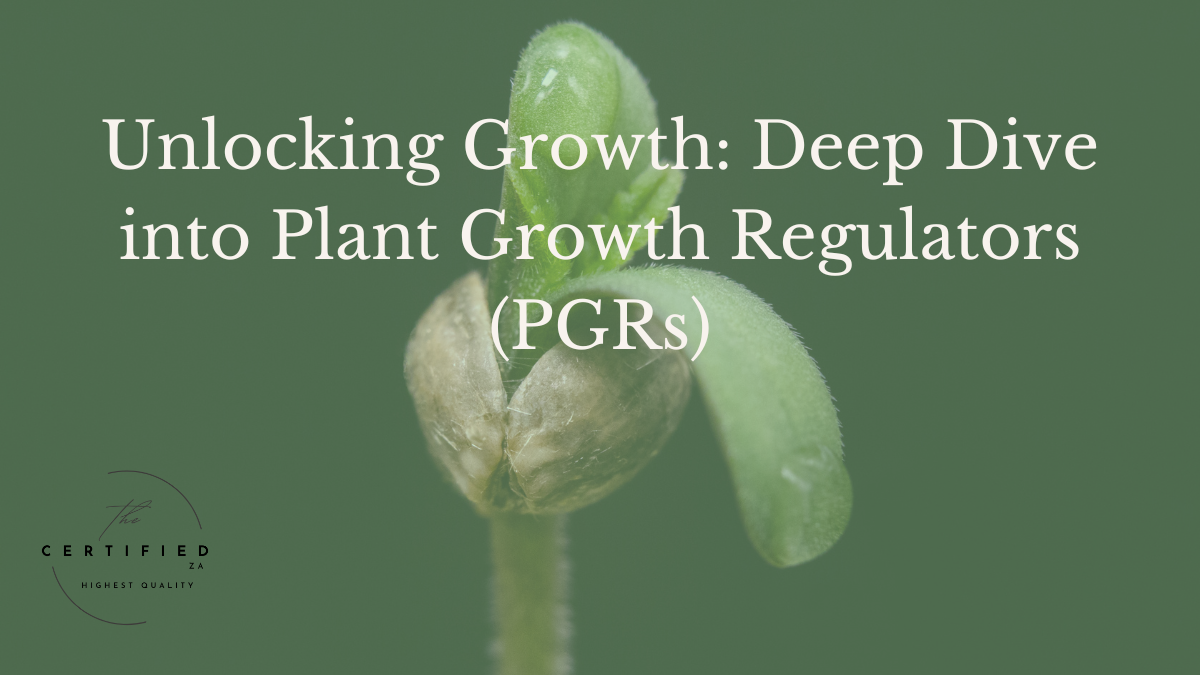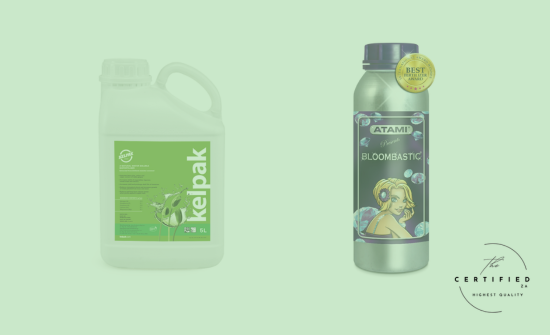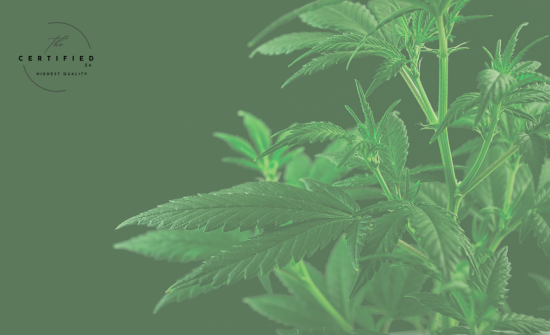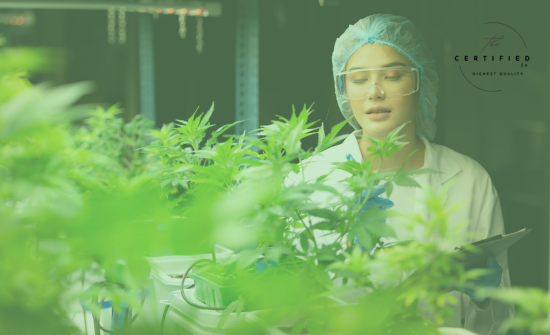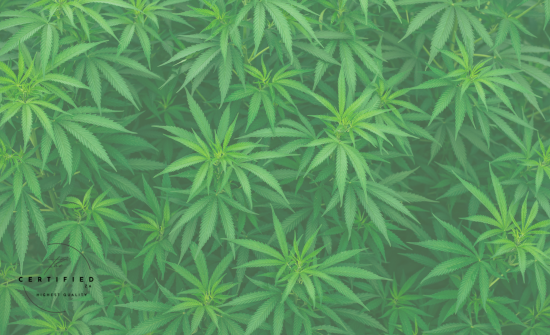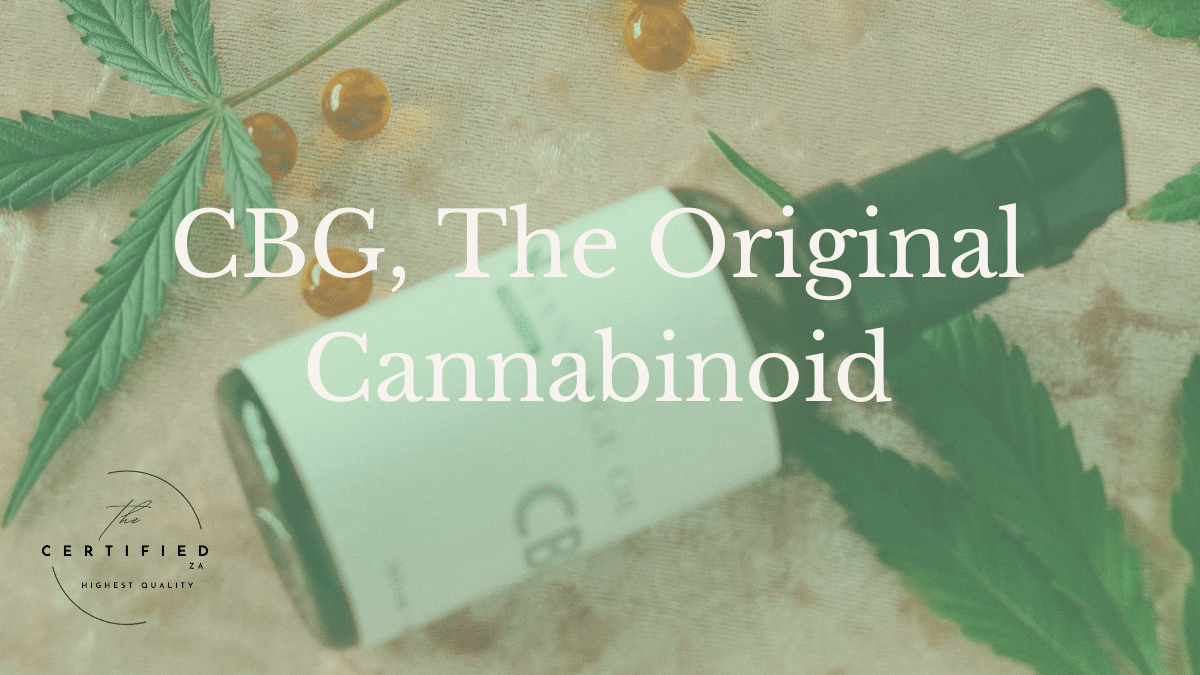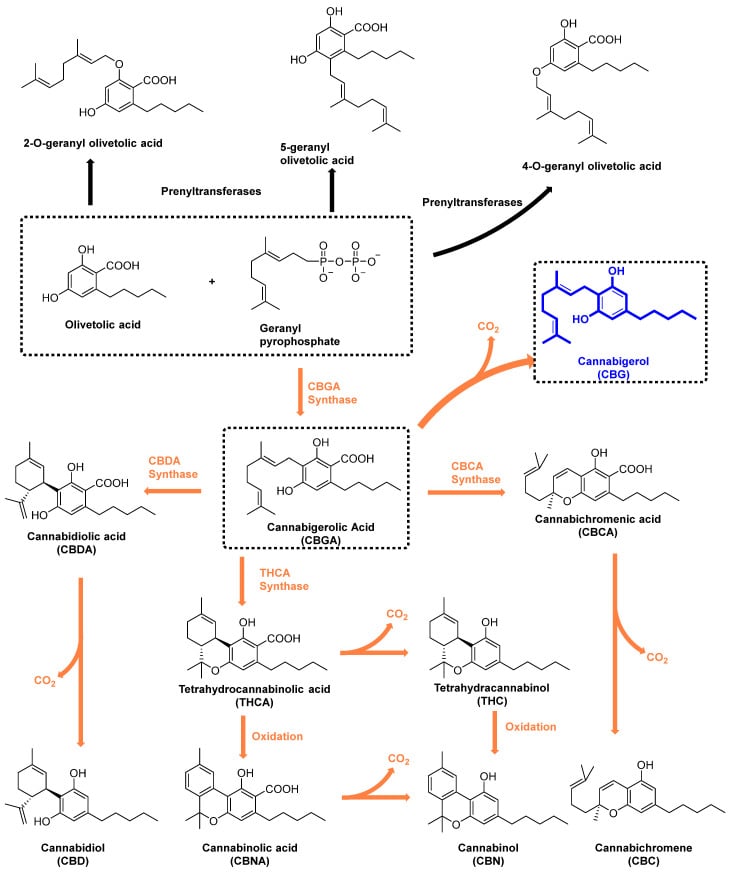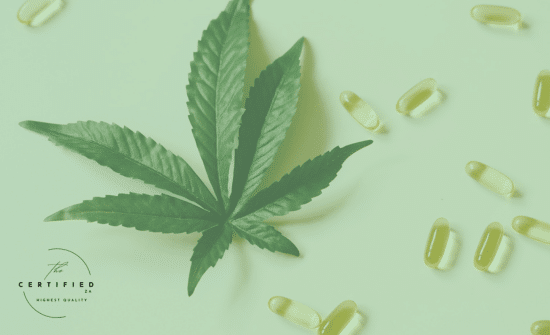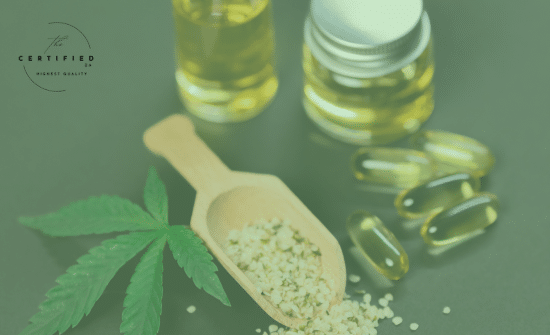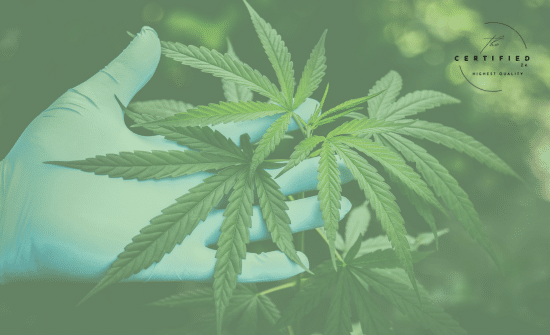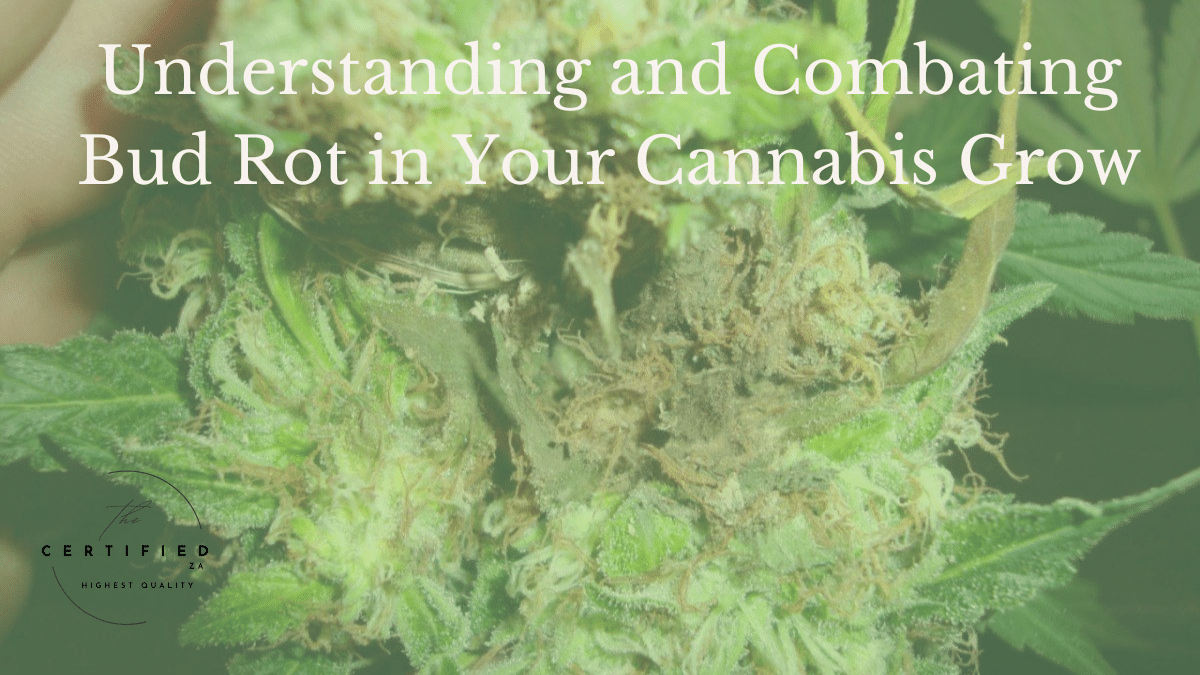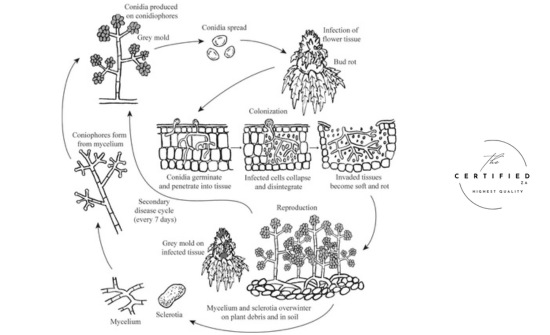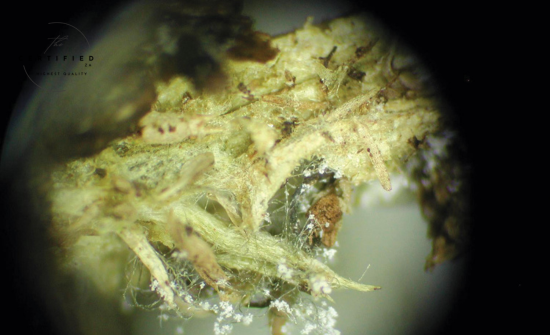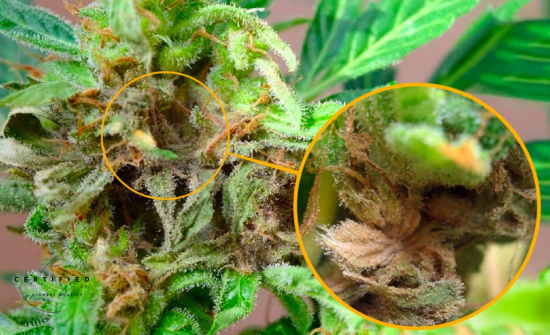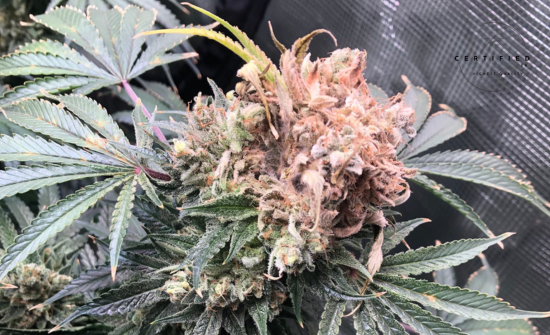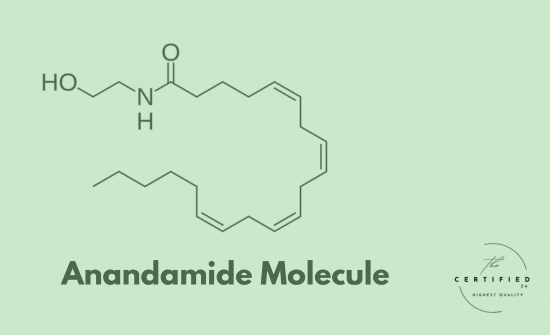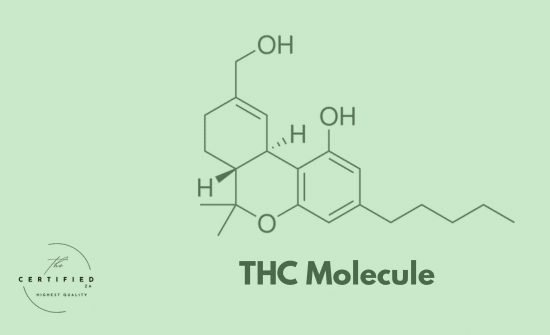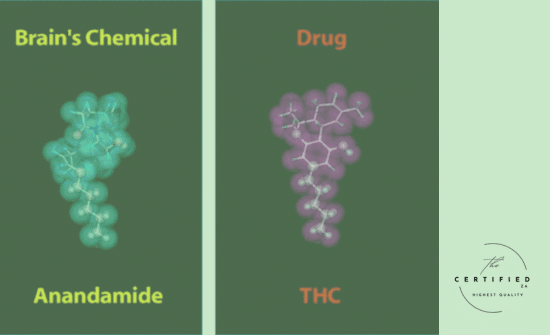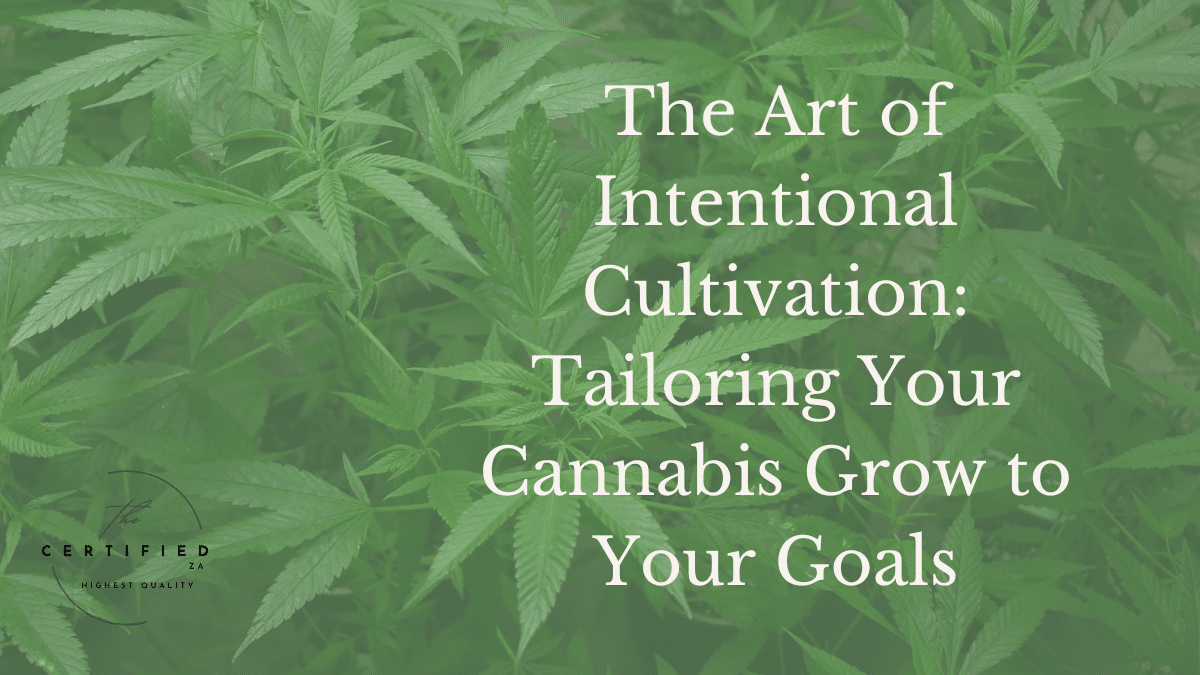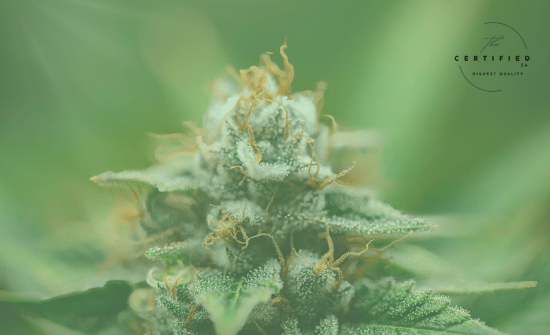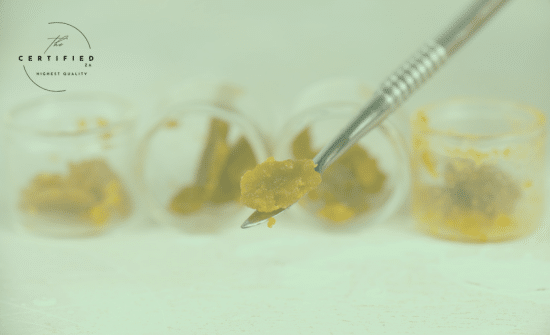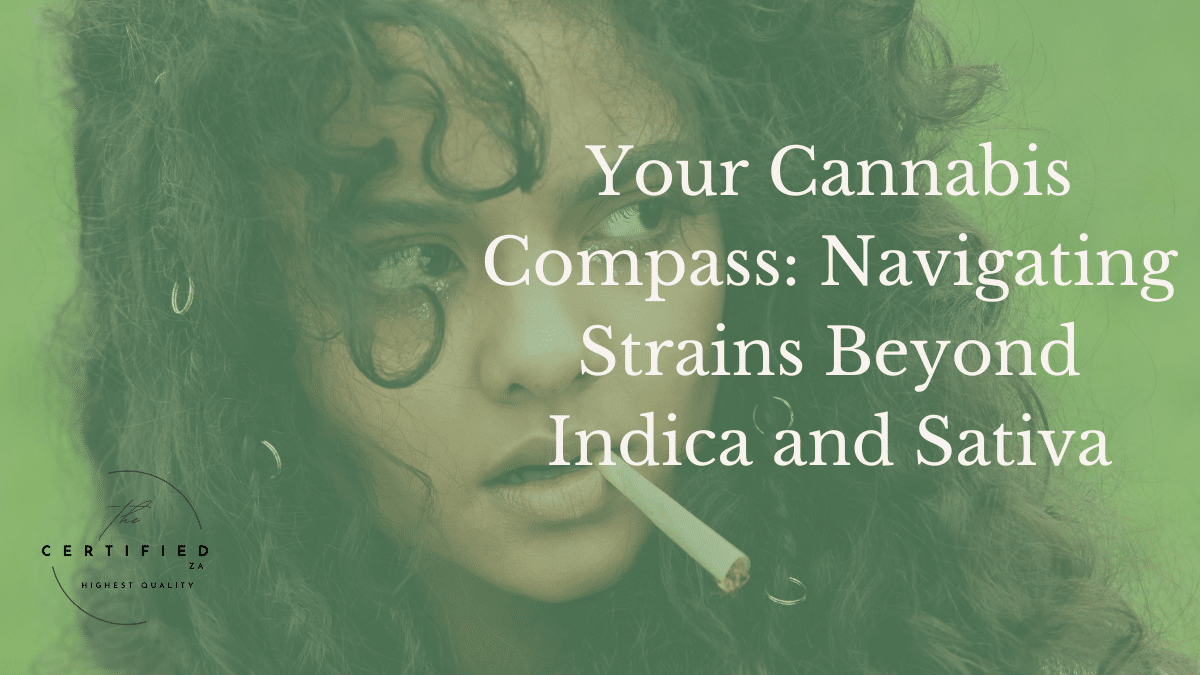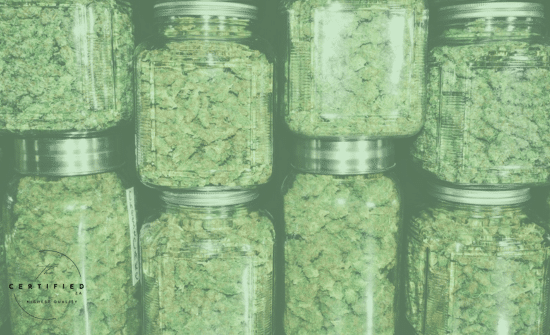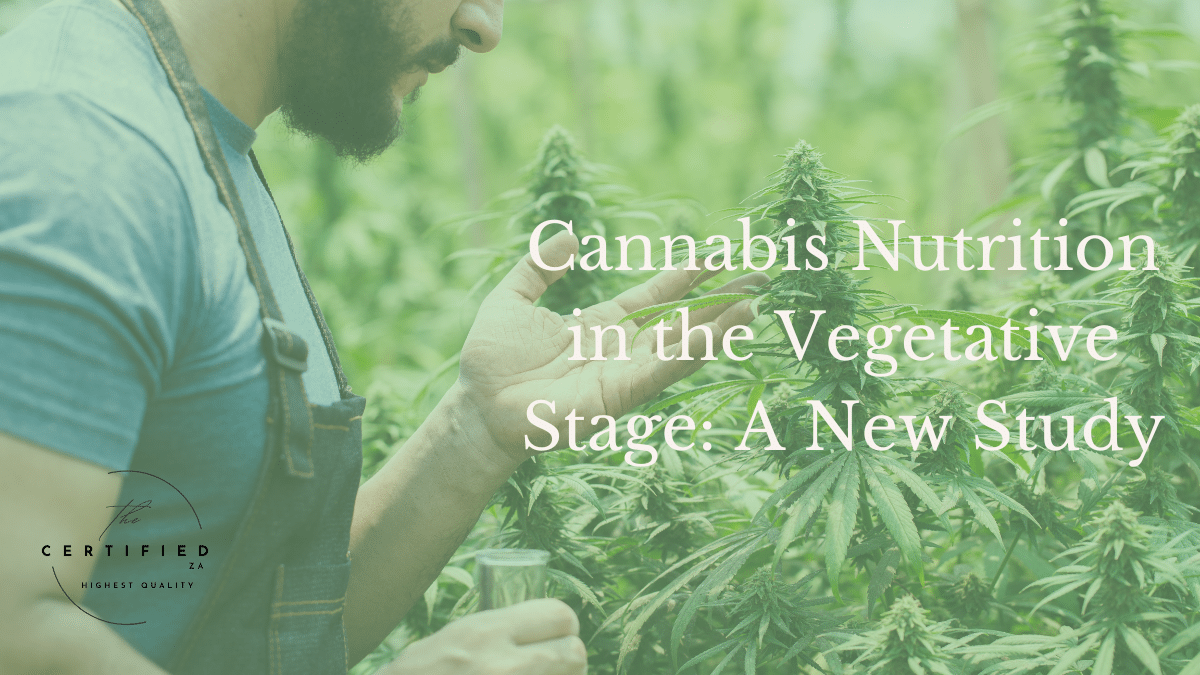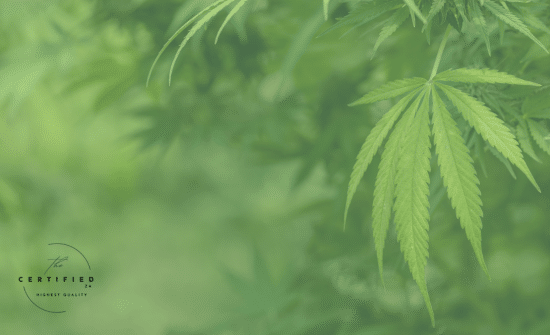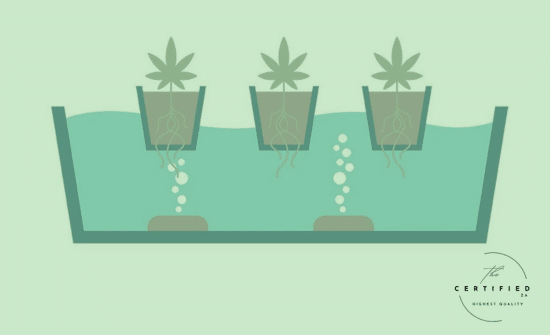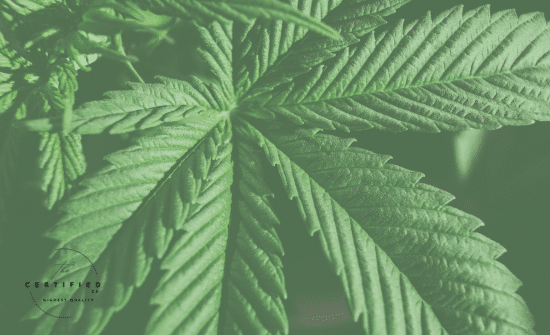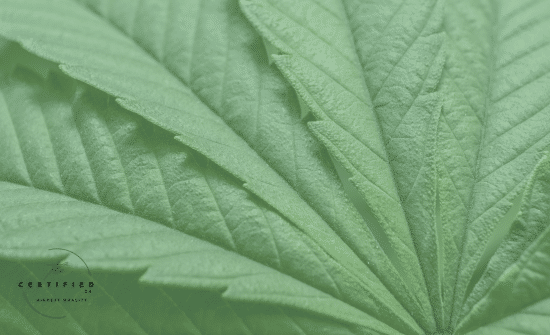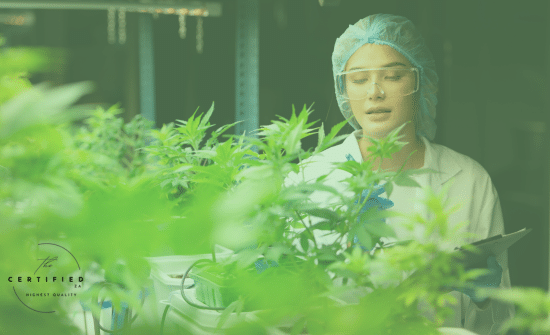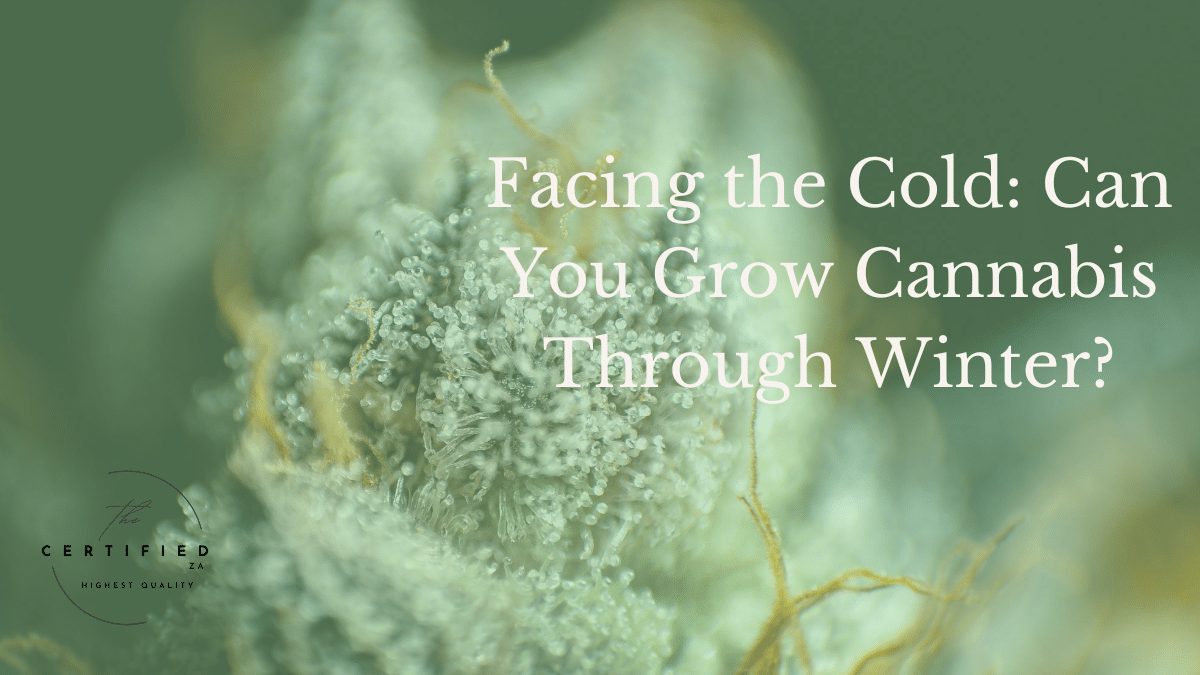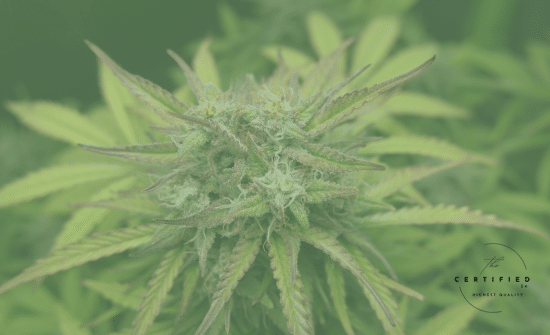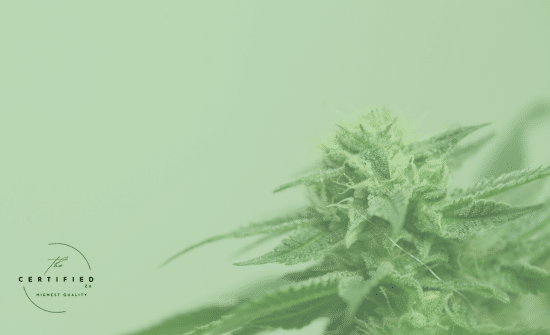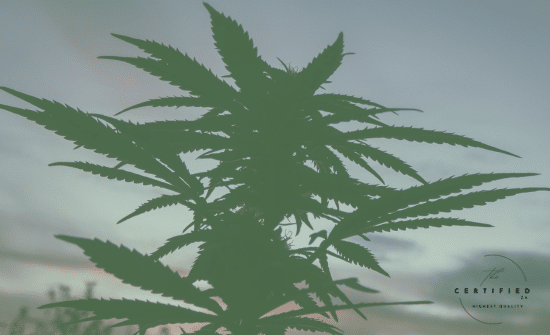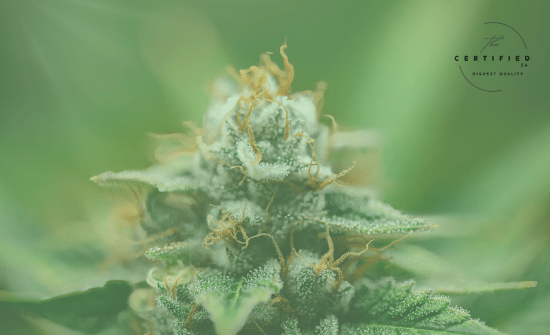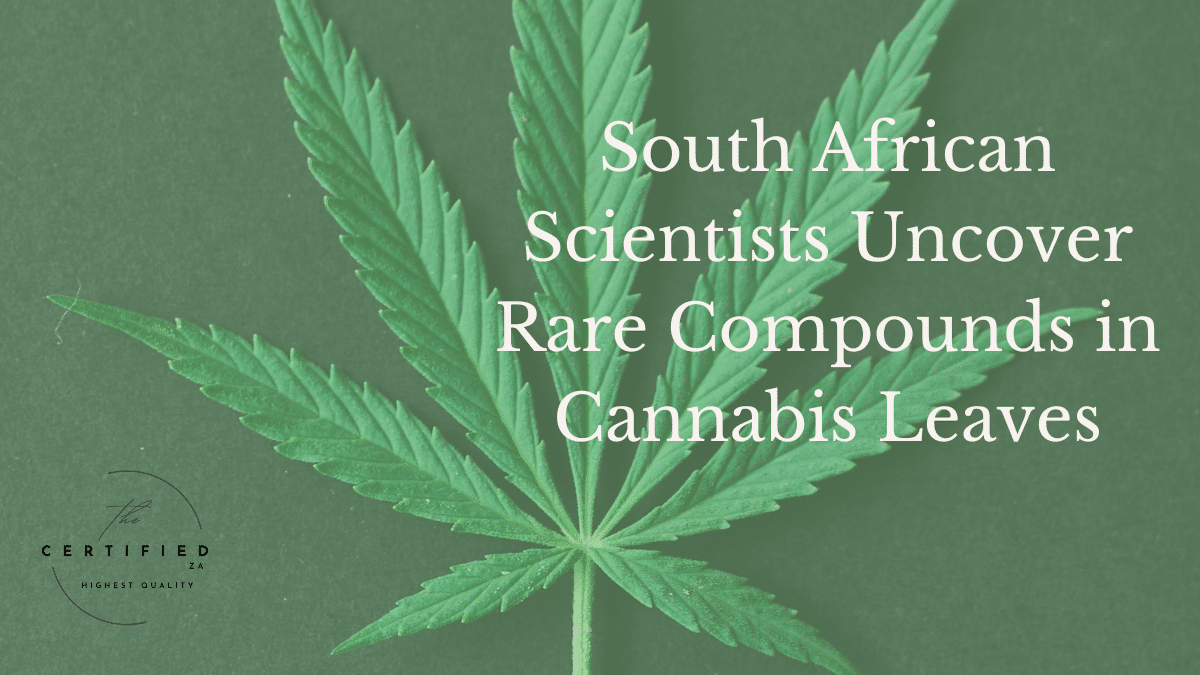
For too long, the conversation around cannabis in South Africa has been narrowly confined, often overshadowed by debates on recreational use or the well-known psychoactive components. Yet, beneath this limited perception lies a world of intricate chemistry, brimming with therapeutic potential that is only just beginning to be unveiled. Right here, on our own soil, groundbreaking research from Stellenbosch University is challenging these outdated narratives, positioning South Africa at the forefront of global cannabis science.
This pioneering study, published in the prestigious Journal of Chromatography A, goes beyond the familiar cannabinoids like THC and CBD. It delves deep into the often-overlooked parts of the cannabis plant – particularly its leaves and inflorescence – to uncover a treasure chest of complex, health-boosting compounds. The findings are nothing short of astonishing, as local scientists have not only extensively characterized previously understudied “phenolics” but have also provided the first-ever evidence of a rare and chemically intriguing class of compounds: flavoalkaloids, in Cannabis sativa L.
This monumental work, led by Magriet Muller and Professor André de Villiers from the Department of Chemistry and Polymer Science at Stellenbosch, utilized state-of-the-art analytical techniques to dissect the chemical makeup of three commercial cannabis strains cultivated in South Africa: ‘Cape Cookie’, ‘CBG’, and ‘Blue Sky’, sourced from Cannsun Medicinals. It’s a testament to the ingenuity and scientific rigour thriving in our nation, offering a glimpse into a future where cannabis is recognized for its full spectrum of medicinal and wellness applications.
The Groundbreaking Discovery: Flavoalkaloids Make Their Debut in Cannabis
The most electrifying revelation from this Stellenbosch study is the unequivocal evidence of flavoalkaloids in the Cannabis sativa L. plant for the first time in scientific history. For many, the term “flavoalkaloid” might sound unfamiliar, and for good reason: these compounds are relatively rare in the plant kingdom, making their discovery in a species as widely studied as cannabis a true scientific breakthrough.
So, what exactly are flavoalkaloids? Imagine a powerful fusion of two distinct classes of plant compounds, each with its own significant biological activities:
- Flavonoids: These are well-known plant pigments and secondary metabolites found in fruits, vegetables, and many herbs. They are celebrated for their potent antioxidant, anti-inflammatory, and neuroprotective properties.
- Alkaloids: These are nitrogen-containing organic compounds, often found in plants, that can have profound physiological effects. Many pharmaceutical drugs, such as caffeine and morphine, are alkaloids.
A flavoalkaloid, therefore, is a hybrid molecule where an alkaloid moiety is directly linked to a flavonoid backbone. This unique structural combination suggests the potential for novel and diverse biological activities, potentially offering a broader range of therapeutic effects than either component on its own. The Stellenbosch research tentatively identified 16 flavone derivatives belonging to four distinct classes of flavoalkaloids, primarily in the leaf extracts of the ‘Blue Sky’ cannabis strain. This specificity is crucial, indicating that the therapeutic profile of cannabis can vary significantly not only between strains but also across different parts of the plant.
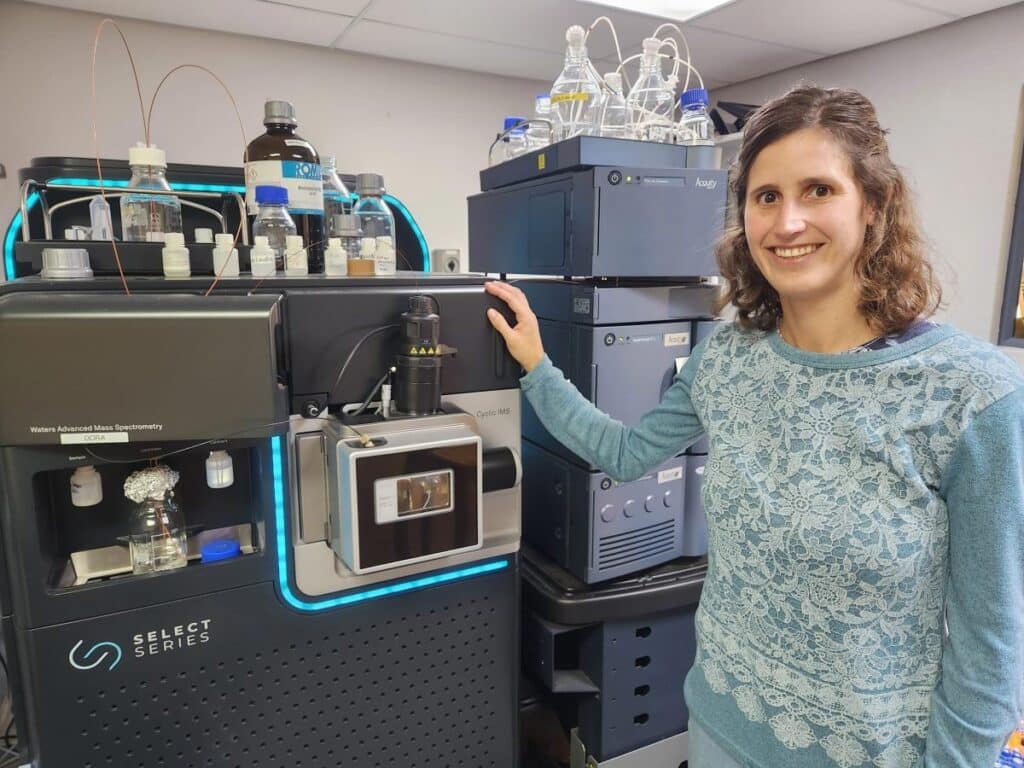
Why is this discovery so profoundly significant?
- Uncharted Chemical Territory: Finding an entirely new class of compounds in cannabis opens up an uncharted frontier in phytochemistry. It implies that despite extensive global research, we are only just scratching the surface of Cannabis sativa’s true chemical complexity.
- Promise for Novel Therapies: In other plant species, flavoalkaloids have been shown to exhibit a wide array of bioactivities, including anti-cancer, anti-inflammatory, antimicrobial, and neuroprotective effects. The identification of these compounds in cannabis offers exciting prospects for developing entirely new therapeutic agents, potentially leading to cannabis-derived medicines with unique mechanisms of action. This moves beyond the current focus on cannabinoids and terpenes, expanding the plant’s medicinal potential exponentially.
- Reimagining Plant Utilisation: The detection of flavoalkaloids predominantly in the leaves of a specific strain suggests that cannabis leaves, often considered by-products in some cultivation practices, may hold significant untapped value. This could lead to more sustainable and economically viable cultivation models, where the entire plant biomass is utilised for its full chemical potential, benefiting local farmers and industries in South Africa.
- Understanding the “Entourage Effect” Further: This discovery adds another layer of complexity to the “entourage effect,” the hypothesis that various compounds in cannabis work synergistically to enhance therapeutic outcomes. The presence of flavoalkaloids suggests a richer interplay of compounds than previously understood, potentially leading to more effective, whole-plant-based remedies.
This unprecedented finding by the Stellenbosch team is a testament to the power of advanced analytical chemistry and underscores the vast, unexplored medicinal potential within Cannabis sativa L.
Diving Deeper: The Rich Tapestry of Cannabis Phenolics
Beyond the groundbreaking discovery of flavoalkaloids, the Stellenbosch study performed an extensive characterisation of other phenolic compounds in the cannabis plant. Phenolics are a diverse group of plant metabolites widely known for their crucial roles in plant defence and their beneficial effects on human health, primarily through their antioxidant and anti-inflammatory properties. Their presence is a key component of the “entourage effect,” where these compounds interact with cannabinoids and terpenes to modulate and enhance therapeutic benefits.
The research identified a remarkable total of 79 phenolic compounds, with an impressive 25 of these being reported in Cannabis sativa L. for the very first time. This expanded inventory paints a much more detailed picture of cannabis’s non-cannabinoid chemical profile. These compounds can be broadly categorised as follows:
- Flavones and Their Glycosides: The study detected key flavones such as luteolin, apigenin, chrysoeriol, and acacetin, many of which were present as O-glucuronide or O-diglycoside derivatives. These are common flavonoids, but their specific glycosylation patterns (attachment to sugar molecules) can influence their bioavailability and biological activity.
- Strain-Specific Variability: A particularly interesting finding was the significant difference in flavone profiles between the strains. ‘Blue Sky’ (Strain C) exhibited markedly higher levels of C-glycosylated flavones (e.g., orientin, vitexin, cytisoside) and their O-glycosylated derivatives, which were either absent or in much lower concentrations in ‘Cape Cookie’ (Strain A) and ‘CBG’ (Strain B). This underscores the importance of genotype in determining the unique chemical signature of each cannabis variety. Conversely, strains A and B showed higher levels of acacetin O-diglycosides.
- Flavonols and Their Glycosides: The researchers also tentatively identified flavonols like quercetin and kaempferol derivatives, including a quercetin O-hexosyl O-glucuronide derivative. These compounds are potent antioxidants and contribute to the plant’s overall protective qualities.
- Phenolic Amides and Hydroxycinnamic Acid Derivatives: The study found a range of these compounds, including N-trans-coumaroyltyramine and N-trans-feruloyltyramine, along with various derivatives of coumaric acid and caffeic acid. These compounds are known for their antioxidant properties and have been investigated for roles in anti-inflammatory processes.
- Novel Phenolic Acid Sulfates: In another significant first, two isomeric caffeic acid sulfates were tentatively identified exclusively in the inflorescence of the ‘Blue Sky’ strain. This discovery of sulfur-containing phenolics in cannabis represents a new frontier for research into their potential bioactivities and functions within the plant.
The comprehensive nature of this phenolic characterisation highlights the extraordinary chemical diversity within Cannabis sativa L. It reinforces that different strains and even different parts of the same plant possess unique chemical profiles, suggesting that targeted cultivation and processing could yield specialized extracts for specific health conditions. The contour plots generated by the analytical method provided a rapid visual comparison of these complex profiles, making these subtle yet significant differences immediately apparent to researchers.
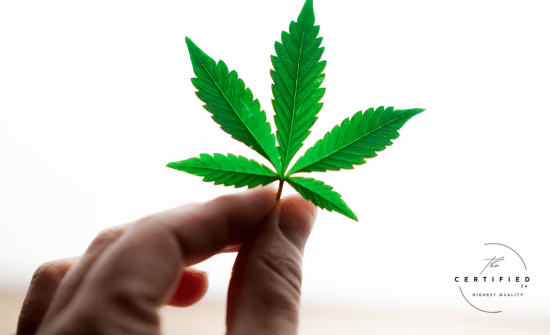
The Cutting-Edge Toolkit: Unravelling Complexity with Advanced Analytical Chemistry
The groundbreaking discoveries from Stellenbosch University were made possible by employing a highly sophisticated and optimised analytical methodology: Comprehensive Two-Dimensional Liquid Chromatography hyphenated to High-Resolution Mass Spectrometry (HILIC × RP-LC-HR-MS). This advanced technique is crucial for dissecting the immense chemical complexity of the cannabis plant, where hundreds of compounds, many structurally similar, coexist across a wide range of concentrations.
Here’s a detailed look at the methodology that enabled these profound insights:
- Sample Preparation: Isolating the Targets
To specifically target polar phenolic compounds and avoid interference from well-known apolar compounds like cannabinoids and chlorophyll, a precise sample preparation strategy was crucial:
- Freezing and Grinding: Plant samples (inflorescence and leaves) were snap-frozen with liquid nitrogen and finely ground using a mortar and pestle. This step preserves the integrity of the compounds and maximizes extraction efficiency.
- Defatting with Hexane: The ground material was defatted three times with hexane through sonication and centrifugation. This process effectively removed non-polar cannabinoids, chlorophyll, and other lipids, ensuring that the subsequent analysis focused on the more polar phenolic compounds.
- Extraction with Aqueous Acetone: After defatting, the polar phenolics were extracted using an aqueous acetone solution (30/70 v/v H2O/acetone), followed by sonication and centrifugation. The supernatant was then evaporated, freeze-dried, and re-dissolved in a dilute H2O/MeOH solution for analysis. This selective extraction method was designed to concentrate the target compounds and minimize interference.
- Comprehensive Two-Dimensional Liquid Chromatography (LC × LC): The Ultimate Separator
Traditional one-dimensional (1D) liquid chromatography often struggles with complex plant extracts, as many compounds co-elute (come out of the column at the same time), making individual identification nearly impossible. 2D-LC overcomes this limitation by employing two different separation mechanisms in sequence:
- First Dimension (¹D) – Hydrophilic Interaction Liquid Chromatography (HILIC):
- Mechanism: HILIC separates compounds based on their polarity. Polar compounds interact strongly with the stationary phase (Acquity BEH Amide column, 150 × 1.0 mm, 1.7 µm) and are retained longer, while less polar compounds elute faster.
- Purpose: This step effectively “spreads out” the highly polar phenolic compounds, providing an initial broad separation based on a property distinct from the second dimension.
- Dilution and Modulation: The effluent from the ¹D column was diluted with a weak reversed-phase solvent and then introduced into an interface with two 80 µL loops, acting as a modulator. This process collects small fractions from the ¹D separation and rapidly injects them onto the ²D column, preventing peak distortion.
- Second Dimension (²D) – Reversed-Phase Liquid Chromatography (RP-LC):
- Mechanism: RP-LC separates compounds based on their hydrophobicity. Less polar compounds are retained longer on the stationary phase (Zorbax Eclipse Plus C18 column, 50 × 3.0 mm, 1.8 µm), while more polar compounds elute faster.
- Purpose: By applying a different separation mechanism, RP-LC can resolve compounds that may have co-eluted in the HILIC dimension.
- Fast Gradient: The ²D separation uses a very fast gradient (0.45 min) and a high flow rate (3 mL/min) to ensure rapid analysis of each ¹D fraction, maintaining high resolution.
- Orthogonality and Peak Capacity: The combination of HILIC and RP-LC is highly “orthogonal” because these two modes separate compounds based on fundamentally different chemical properties. This means compounds that co-elute in one dimension are highly likely to be separated in the other, leading to vastly improved resolution. The Stellenbosch method achieved an “excellent separation performance” with a “practical peak capacity above 3000” and an average orthogonality of 75%. This level of separation is exponentially greater than what can be achieved with 1D methods, allowing for the detection of many more individual compounds.
- Method Optimization: The team used an in-house developed predictive optimization algorithm (in Matlab R2019b) [31-33]. This software systematically explored a wide range of experimental conditions to find the optimal settings for analysis time, peak capacity, and resolution, further enhancing the method’s effectiveness.
- High-Resolution Mass Spectrometry (HR-MS) – Quadrupole Time-of-Flight (Q-TOF): Identifying the Unknowns
As compounds exit the ²D column, they are immediately directed to a Q-TOF mass spectrometer. This instrument is essential for identifying the separated compounds:
- Accurate Mass Measurement: Q-TOF provides highly accurate mass measurements of both precursor (intact) ions and fragment ions. This precision allows researchers to determine the exact molecular formula of an unknown compound, which is a crucial first step in identification.
- MSE Fragmentation: The instrument was operated in MSE mode, which collects both low (4 eV) and high (10-30 eV ramped) collision energy data simultaneously. Low-energy data shows the intact molecular ions, while high-energy data provides characteristic fragmentation patterns. These “fingerprints” are invaluable for elucidating the structure of compounds, even those never before seen.
- Tentative Identification: By combining accurate mass data, fragmentation patterns, UV spectral data (from the DAD detector), and relative retention times in both dimensions, researchers could tentatively identify 79 compounds, including the novel flavoalkaloids and phenolic acid sulfates.
This sophisticated analytical pipeline allowed the Stellenbosch team to peer into the complex chemistry of cannabis with unprecedented clarity, leading to discoveries that would have been impossible with less advanced techniques.
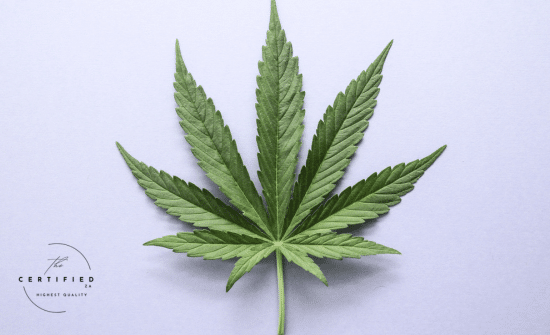
The Road Ahead: An Exciting Journey of Discovery
The work by Magriet Muller and Professor André de Villiers is not merely an academic exercise; it is a powerful stride into the future of cannabis. It reminds us that even in plants we think we know well, nature often holds profound secrets waiting to be uncovered. As research continues to peel back the layers of Cannabis sativa’s intricate chemistry, the potential for new health solutions and economic opportunities grows exponentially.
For South Africa, this research is a beacon of hope and innovation. It champions local scientific excellence and offers a path toward a future where cannabis is understood and utilised for its full, multifaceted potential, contributing significantly to health, wellness, and a sustainable economy. The journey to fully understand cannabis and its immense potential has just become even more fascinating, and we eagerly await the next chapter of discoveries that will undoubtedly emerge from our vibrant scientific community.
You can read the full published paper here: “Comprehensive two-dimensional liquid chromatographic analysis of Cannabis phenolics and first evidence of flavoalkaloids in Cannabis” by Magriet Muller and André de Villiers, 2 August 2025, Journal of Chromatography A.
DOI: 10.1016/j.chroma.2025.466023

